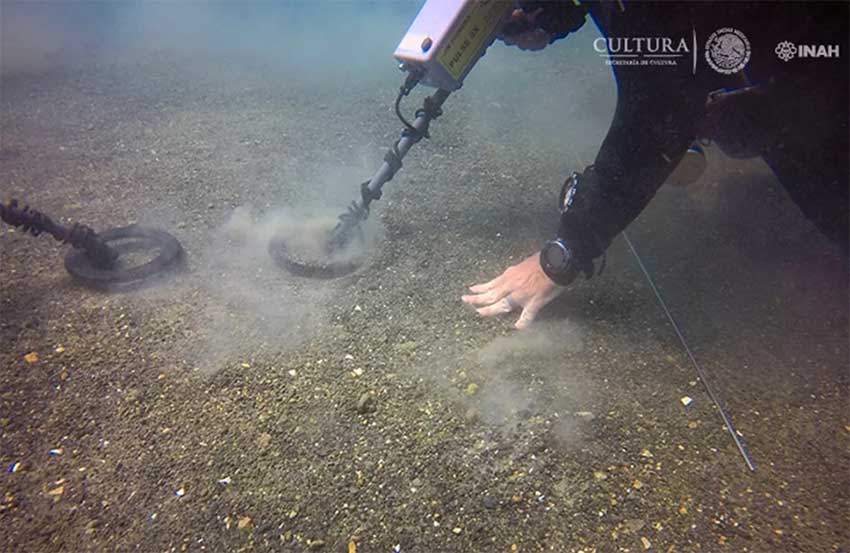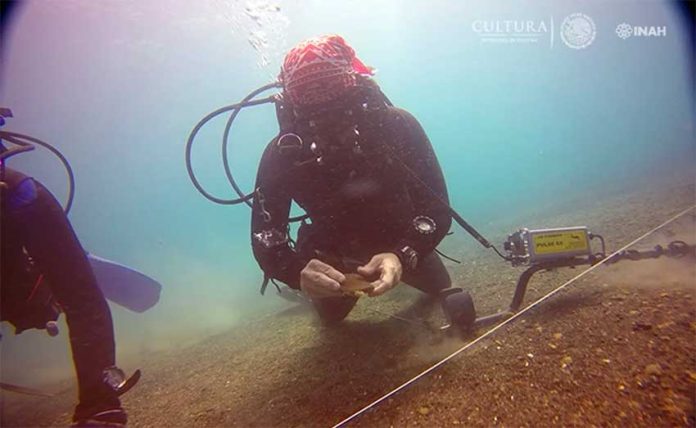An exploration project to search for the 500-year-old sunken ships of Spanish conquistador Hernán Cortés is making progress, according to the leading archaeologist.
An international team led by Dr. Roberto Junco, head of the Underwater Archaeology Department at the National Institute of Anthropology and History (INAH), last year began combing a 10-square-kilometer area of seabed in the Gulf of Mexico off the coast of Actopan, Veracruz.
The area being explored lies off Playa Villa Rica, a beach located about 75 kilometers north of the port city of Veracruz.
In 1519, historians say, Cortés scuttled 10 of the 11 ships that arrived in Mexico to ensure that the men under his command would have no way to return to Cuba and would follow him on his expedition inland.
Junco told the newspaper El Universal that using a magnetometer and a side-scan sonar, among other technologies, underwater archaeologists have located “between 60 and 70 magnetic anomalies” that could be ship parts. Divers will review each and every one of the anomalies, he explained.

“We’ve reviewed a dozen magnetic anomalies but this year we have to continue with the revision to see if we can find the remains of the 10 ships . . . .” Junco said.
“We’ve found some relics of maritime activity in the area. We still need to dig . . . in the areas where there are anomalies, that will allow us to detail what elements are there, they could be bolts, anchors, cannons, all kinds of metal objects that the ships had, even wood that has nails used in construction,” he added.
The archaeologist explained that digging is necessary because it is likely that the remains of the ships are hidden below meters of sand and sediment.
Junco said that Canadian experts collaborating on the project have specialized machinery that allows hidden objects to be visualized before they are uncovered, quipping “the ships aren’t going to be waiting for us on the sand.”
To date, no objects have been removed from the sea.
“We follow the philosophy of leaving things in situ. Until you can truly conserve an object, you don’t remove it because water conserves it quite well despite what you might think. Once you remove an object from the aquatic medium it begins to deteriorate very quickly. We don’t take anything out unless we’re sure we can conserve it,” Junco said.
He said that the probability of finding remains of the ships was high, explaining that if one is found it is likely that the rest of the fleet will be nearby.
The discovery of the ships would be significant, Junco added, because it would facilitate the study and understanding of technology used in the 16th century.
“These ships are very important because they are among the first that sailed through Mexican waters . . . These ships represent very precise technology that made it possible for the Spanish and Portuguese to be able to ‘discover’ . . . an unknown area,” he said.
Junco contended that if the ships are found, their ownership could not be contested because they are in Mexican waters. He also explained that the team he leads is looking for ships sunk by Spanish conquistador Pánfilo de Narváez in the years before Cortés’ expedition.
In the past five centuries, only 19th-century historian Francisco del Paso y Troncoso has scoured the ocean floor to look for Cortés’ sunken fleet but he didn’t locate any of the vessels, which played a key role in the Spanish conquest of Mexico.
Source: El Universal (sp)
